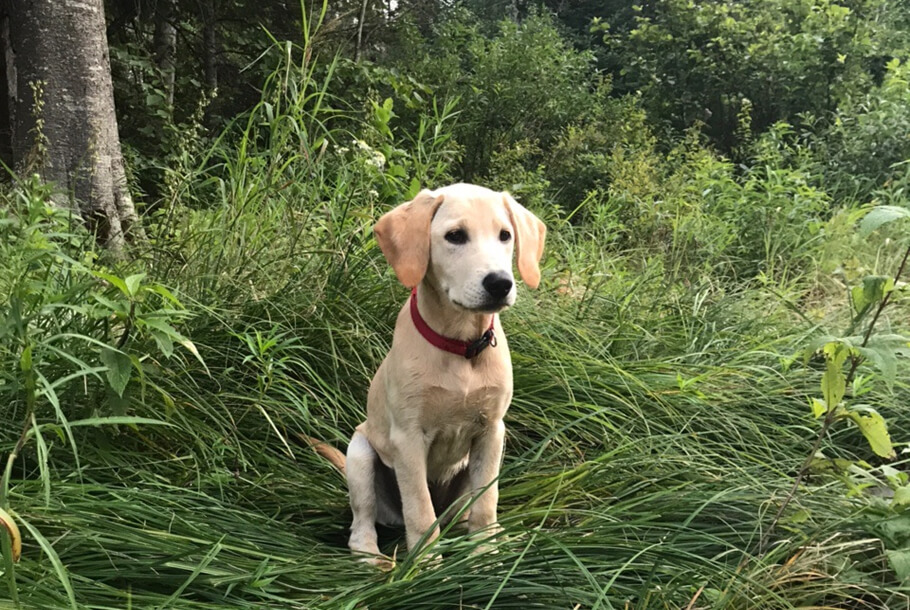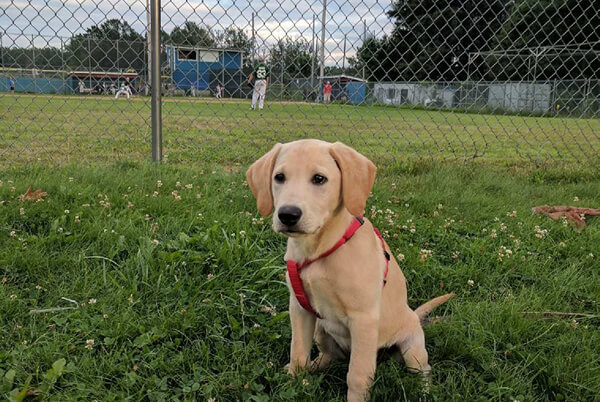
Jason R. of New Hampshire, a follower of LabsnDucks, sent me a multi faceted question regarding his 13-week old Lab puppy, Willow. Following are his questions in segments, and my replies.
Question: The basic command training- sit/come is going well when I use treats. When I don’t use treats, like just being around or playing in the yard, things don’t go very well with commands. It’s like she forgot what we just did half an hour ago.
Reply: As I have written, I am not a fan of using treats to train. But, I also admit that for many it seems to work. I reference the major dog shows on TV (not hunting related; but contests of various breeds for looks, ability to perform ‘unique drills,’ etc.) Those trainers pump treats into the dog at virtually every turn. To me, it is treat conditioning: the dog does things just for the treat. OK, I know in their case it’s more involved than that and it’s not JUST for the treat – but it’s close.
Obedience trainers that I have observed dole out treats constantly. I suspect it’s because treat training can be easy and they are on the clock. You signed up for 10 lessons and they need your dog obeying before last bell.
I mean no disrespect toward any of the above because treat training apparently works for their purposes. But for folks like you or me, I think it is counterproductive.
I believe a hunting Lab should perform for two basic reasons. First: because when she is successful she will get high praise from you which all Labs crave. Second: (and maybe this one should be first,) because you told her to do it and so much of training is about your control of your dog.
Because Willow is not performing well without a treat incentive, I suspect you have simply treat conditioned her to sit.
Plus, I take from your comments that your sit/come lessons are in a controlled environment but when you add distractions, like playing in the yard, the distractions impact her ability to obey.
I would go back to the beginning, segment the lessons and nix the treats. It’s very important however, to wean the pup off the treats.
With no other distractions – like people, other dogs, etc. I would start teaching ‘sit’ all over again. No other distractions is an important consideration. And for now, don’t have anyone else give her sit and stay commands until she does it well for you. The fact that she already understands sit should make this easier and let you move along a bit quicker.
When she sits during the lesson, praise her. Don’t go over the top with praise because that will get her excited and ruin her focus. Soft and calming ‘good girl’ and stroke her head. It’s hard to say how many times in a row to do this because all dogs are different but for now, not too many at all because she has a very short attention span. When you think she ‘gets it,’ stop. Give her more lavish praise then stop the drill altogether.
When you feel she is sitting well during the lesson without the treat, add ‘’stay’ to the sit command. But don’t require her to stay for too long. When she ‘stays,’ even momentarily to your satisfaction, praise her while she is still sitting/staying and do not let her break yet. When you think she ‘gets it,’ stop the drill. Eventually add ‘come’ to the sequence in the same manner. Sit/stay/come are extensions of the same exercise.
Going back to the beginning and segmenting will take patience on your part because you’ve already done it but as with any drill, when the dog messes up or doesn’t fully understand, you go back to the beginning. Your goal is to get her to sit/stay/come without a treat inducement; AKA just because you told her to.

Then, you can begin to add some minor distractions like other people, playing in the yard, or being at the ball field. Start at your side, or with her close and in front of you under control and then go thru the sequence sit/stay/come just once or twice.
Question: It’s like she forgot what we just did a half hour ago.
Reply: Some Lab people brag about the ability of a Lab to always learn at amazing speed and always maintain what they learned forever. I wish. I have taken my Labs hunting at an age and level of experience when they should ‘know better’ about everything and still sometimes found myself yelling, “How could you have forgotten what you have done a gazillion times before?”
At 13 weeks, Willow is going to forget stuff. The goal is not to get her to remember everything all at once. It is to teach her through patience, repetition and yes, age appropriate discipline what you expect from her. Even sit/say/come, the most basic of all commands, are commands you will find the need to remind her of forever.
And this is real important advice for all times but especially for teaching sit because that is one of the first things you teach and sets the tone for the future: Never give the dog a command that you are not in a position to enforce.
Question: I keep the practice sessions short, 2 or 3 times a day for 5-10 minutes.
Reply: Two or three times a day working on sit/stay/come is not necessarily an issue but a 5-10 minute drill could feel like an eternity for a 13-week old puppy. How often, and how long, are ultimately determined by you as you gauge how well, or how poorly Willow is ‘getting it.’ But at this age you don’t want her thinking, “Ugh, this again!”
Question: I’m not using a leash or check cord. And when is she old enough to be introduced to wings/feathers?
Reply: You didn’t specify, but it sounds like you also want to prep Willow for upland bird hunting. Certainly you don’t need a check cord to teach sit/stay/come, so if your goal is to use it to get the dog to ‘hunt close,’ I think it’s too early for that.
Your question about feathers further suggests that you want to move through the overall training process quickly. I can’t blame you for that but I like to do things in steps. I’ve heard some say to introduce your dog to feathers at, say 12-15 weeks. And when we have a dog in that age range, or even older that has never even sniffed a feather we say, “Egad, I am way behind the process!” Not.
I would be sure the dog retrieves bumpers of various shapes and materials before I wrapped one in feathers. Get her used to one thing before adding a new element.
I also suggest on my website that timing for when a dog moves on to any next level is not determined by clock or calendar.
Jason, as overall comments:
I suggest you start a relationship with a ProCoach for ongoing answers to specific issues that you and Willow have now, and will develop later. When you first visit a ProCoach he/she is seeing your dog and can relate to the specific issue, the specific animal, and the specific owner. You don’t have to commit to a long term relationship but at least have him/her help you develop a program specific to Willow and your own goals with the pro seeing firsthand what you are up against.
If you will do duck and upland bird hunting a ProCoach can layout a program for both and at appropriate stages in Willow’s training and development. And a ProCoach will have access to live birds, not just feathers, and that cannot be understated.
As evident from the two photos that you sent me, you and Willow have made progress. Willow is a good looking female pup; focused and sitting tall. We can also see her progress sitting and staying with distractions (baseball game in the background.)
It looks to me like you are dedicated and enthusiastic in your training. Continue being diligent but mostly being patient. And hold the treats until the end of the session. Enjoy the journey and best of luck!
Update:
A week or so after I sent Jason a private email reply, he sent me this update:
I took your suggestions about eliminating distractions, less treats, shorter sessions, and more praise. Things are going much, much better. I didn’t realize how much a minor distraction (they are endless) could cause her to get off track. More and consistent praise is also helping. Even minor praising, when she comes when called in small environments, is making a big difference all around. I hate to say it but I forgot how much fun this puppy training stuff really is.
Thanks
Jason